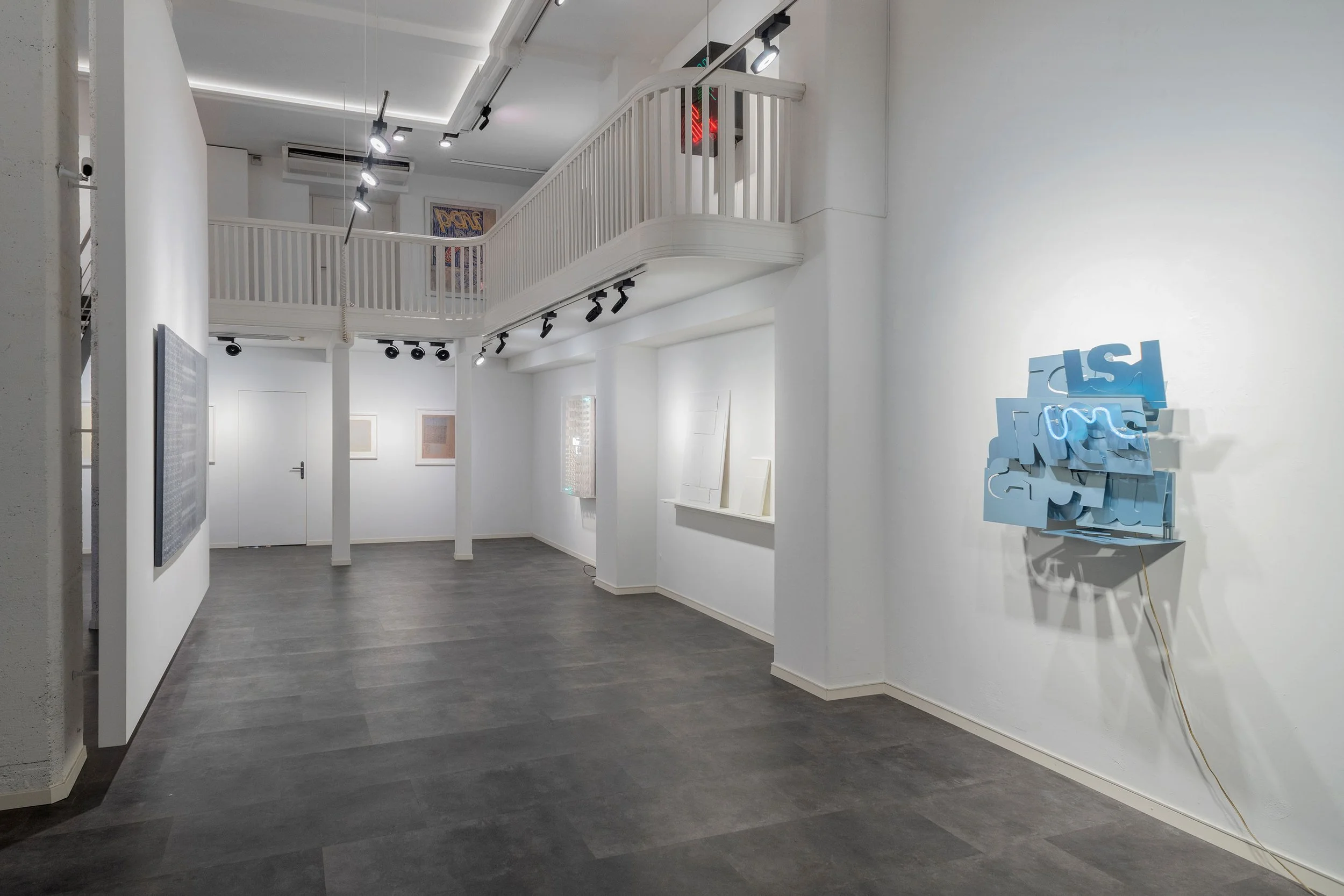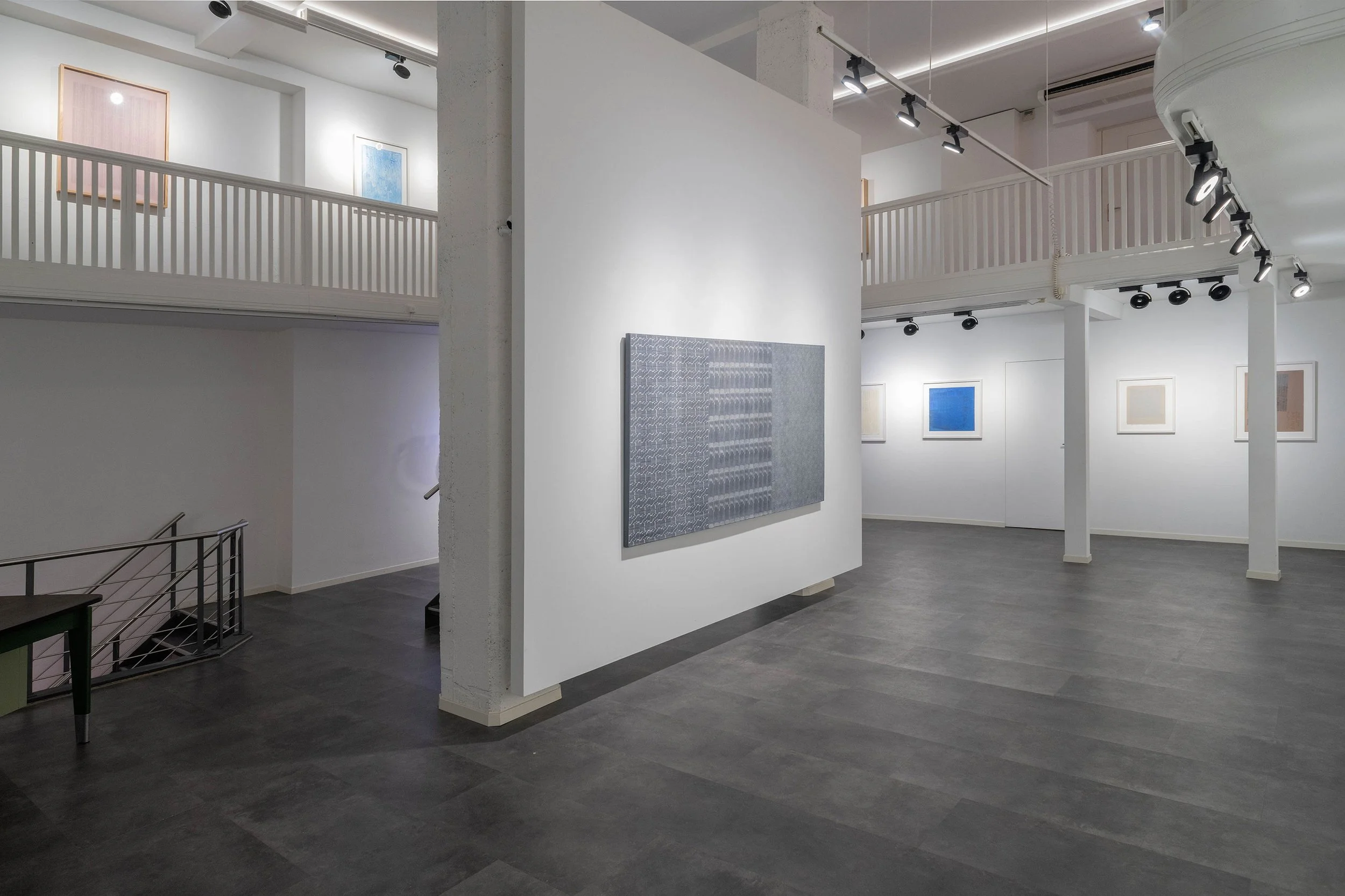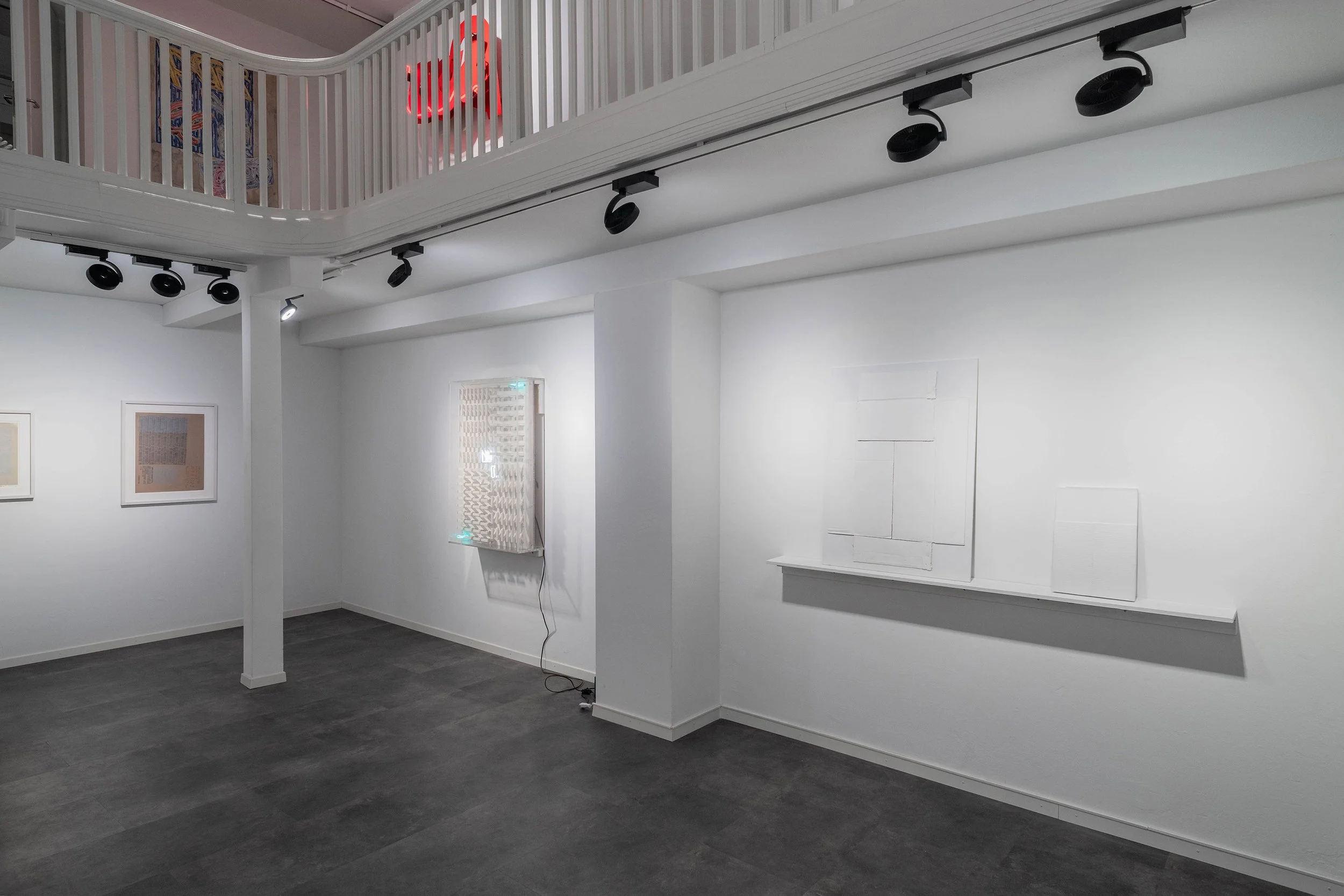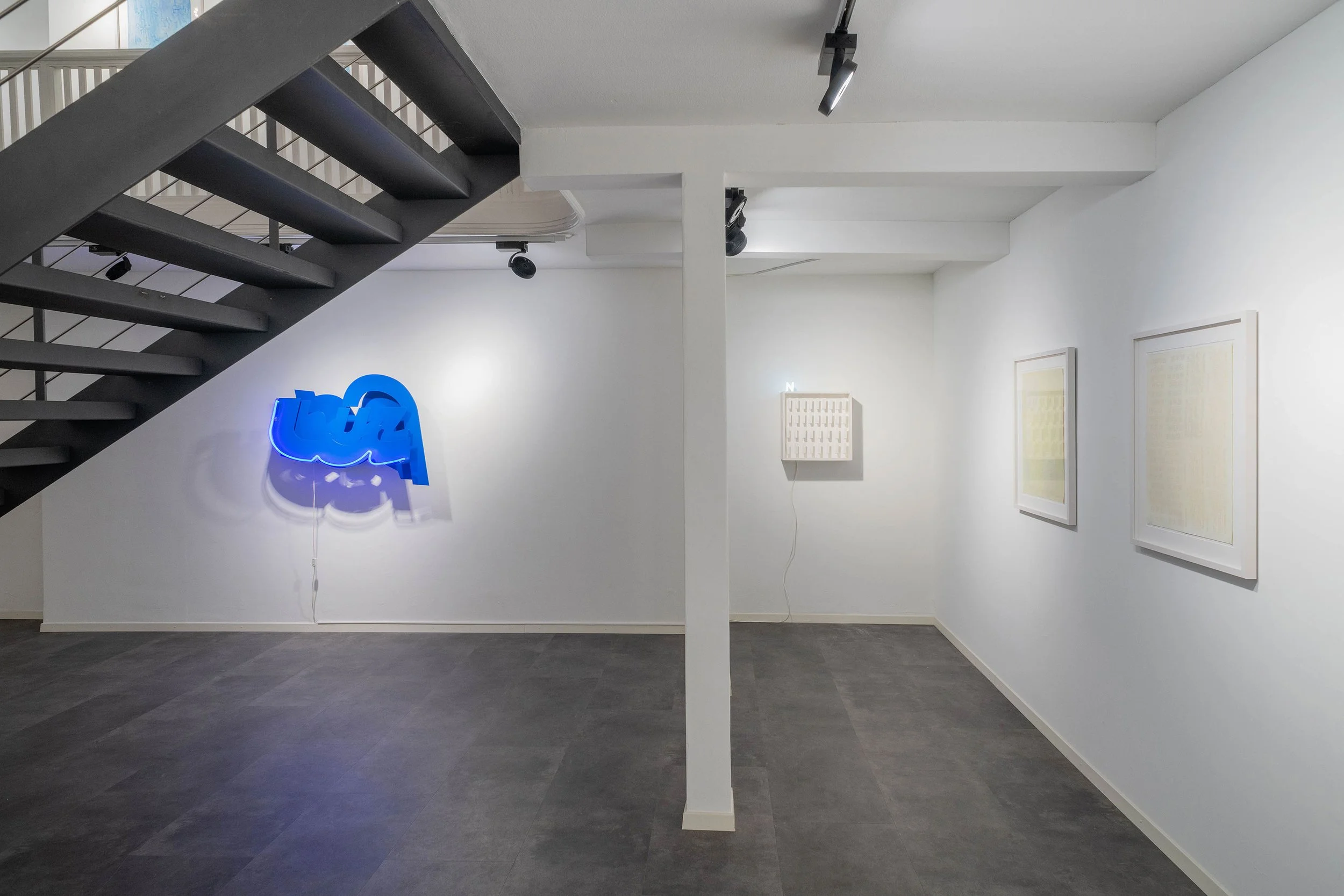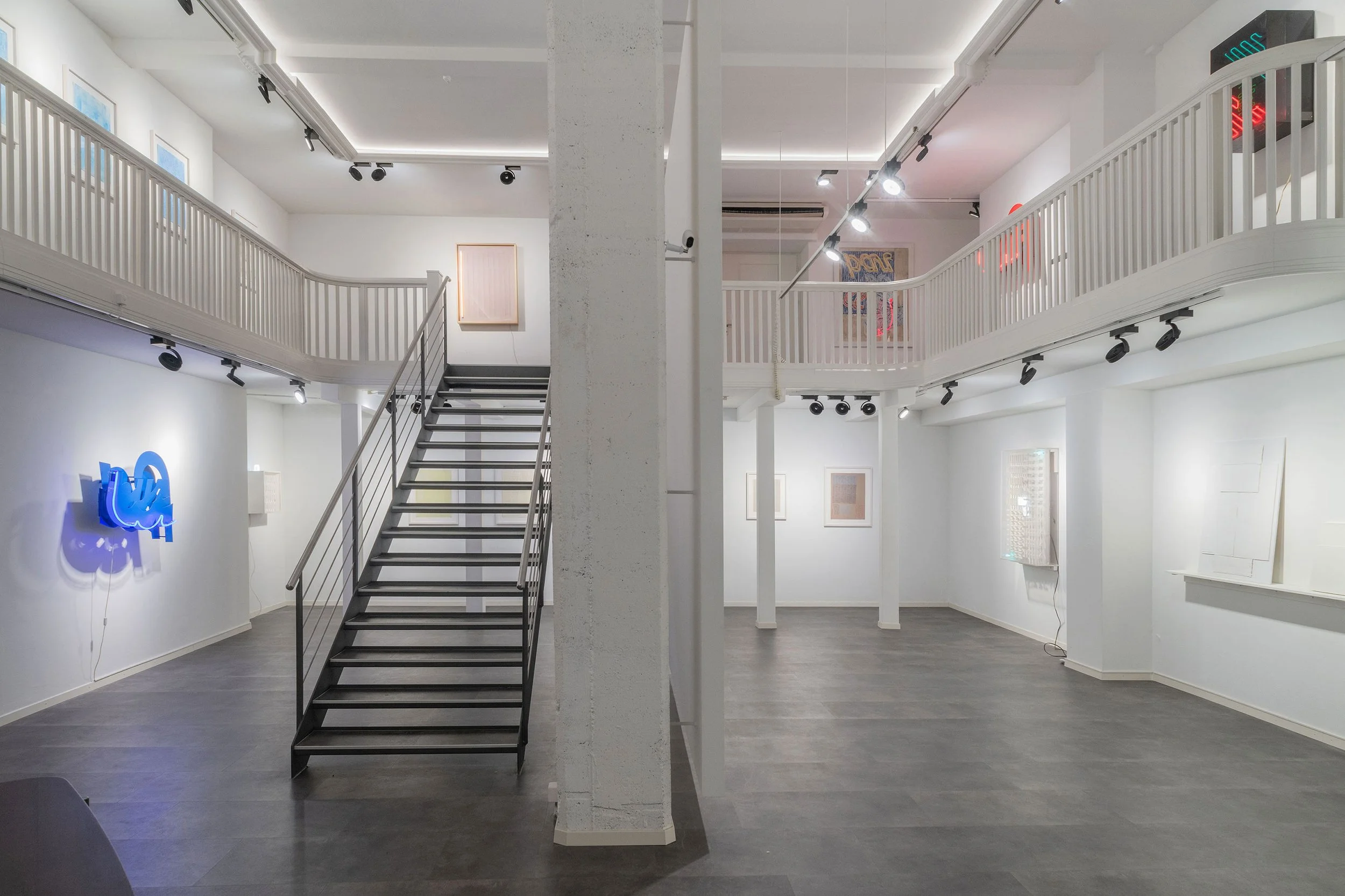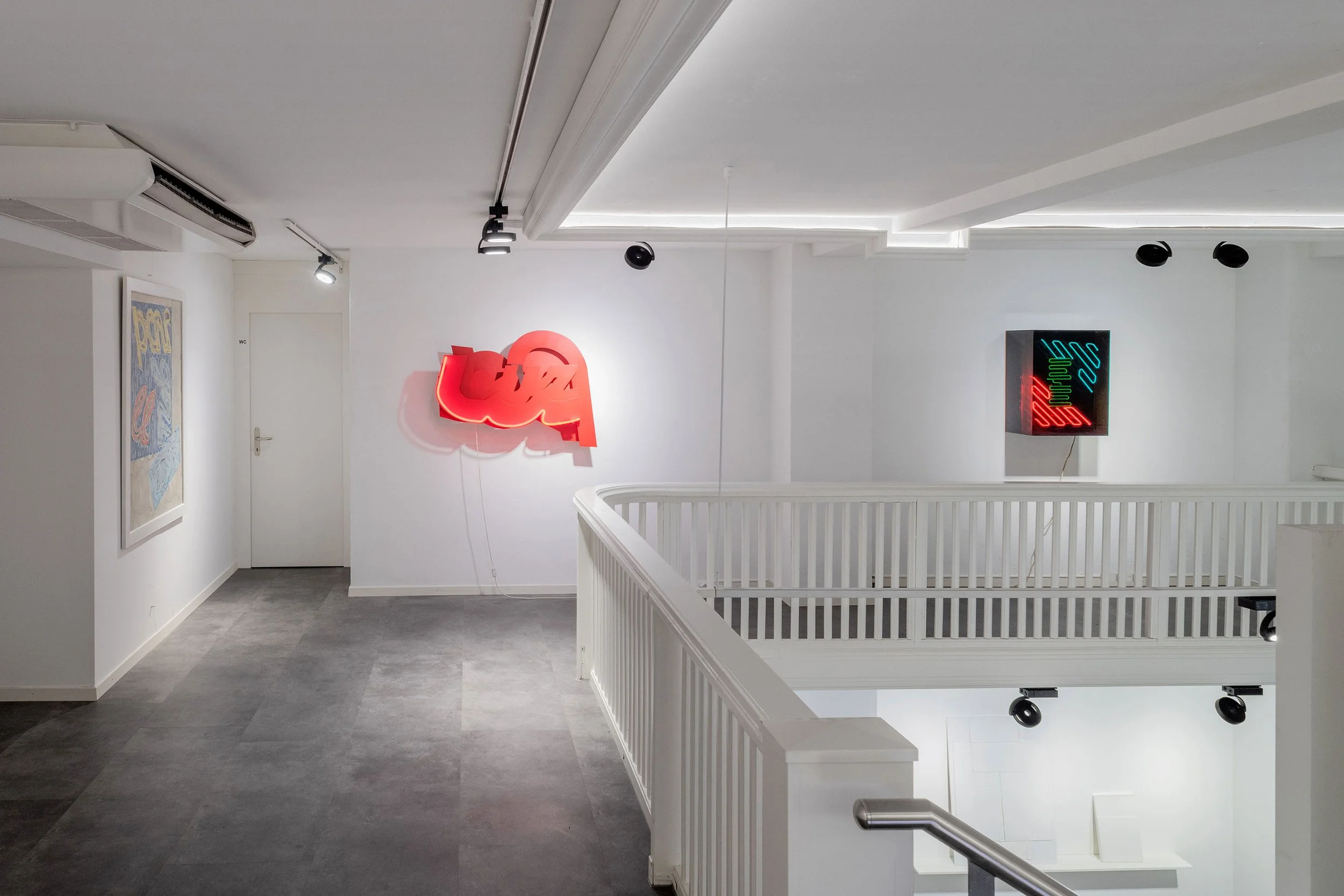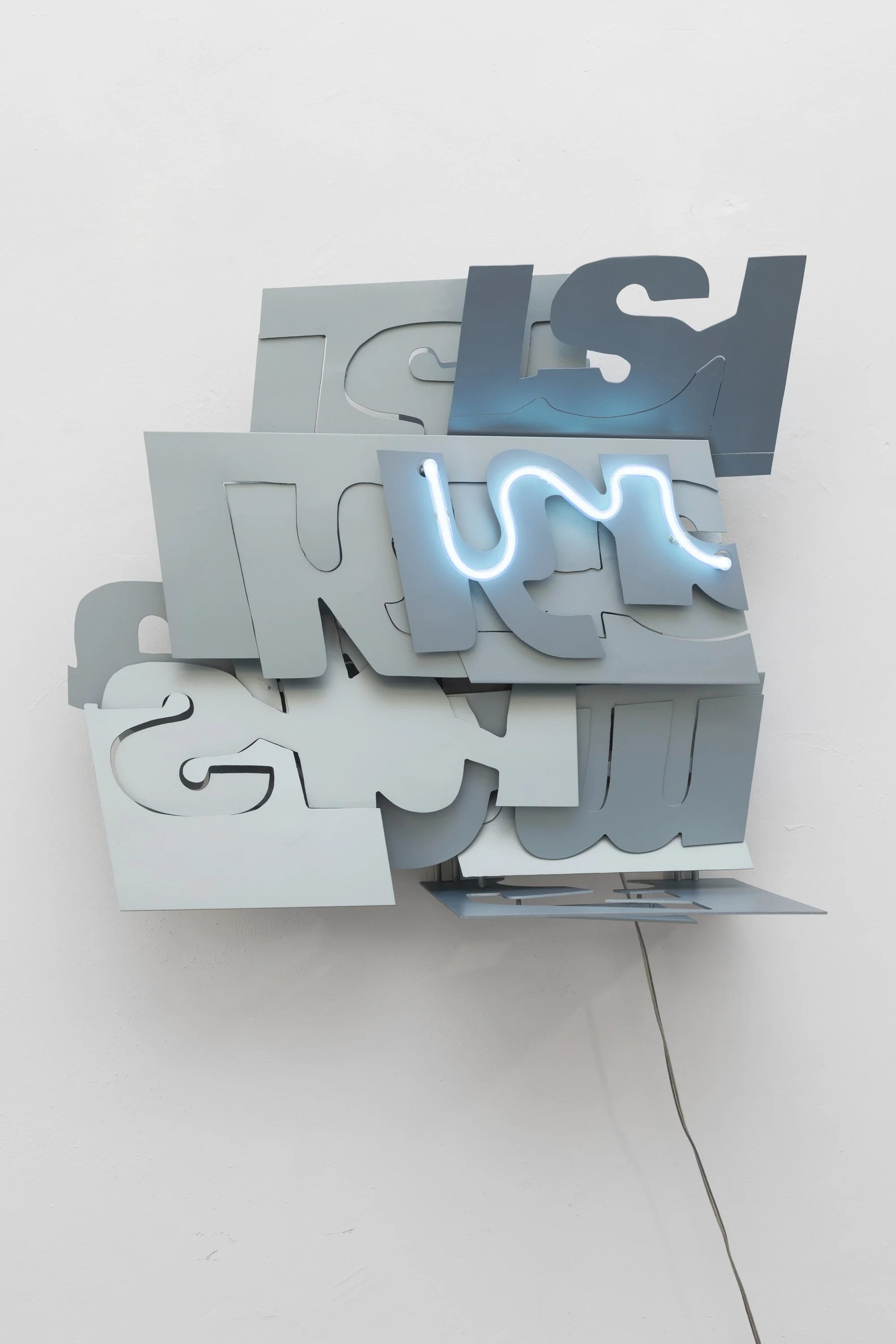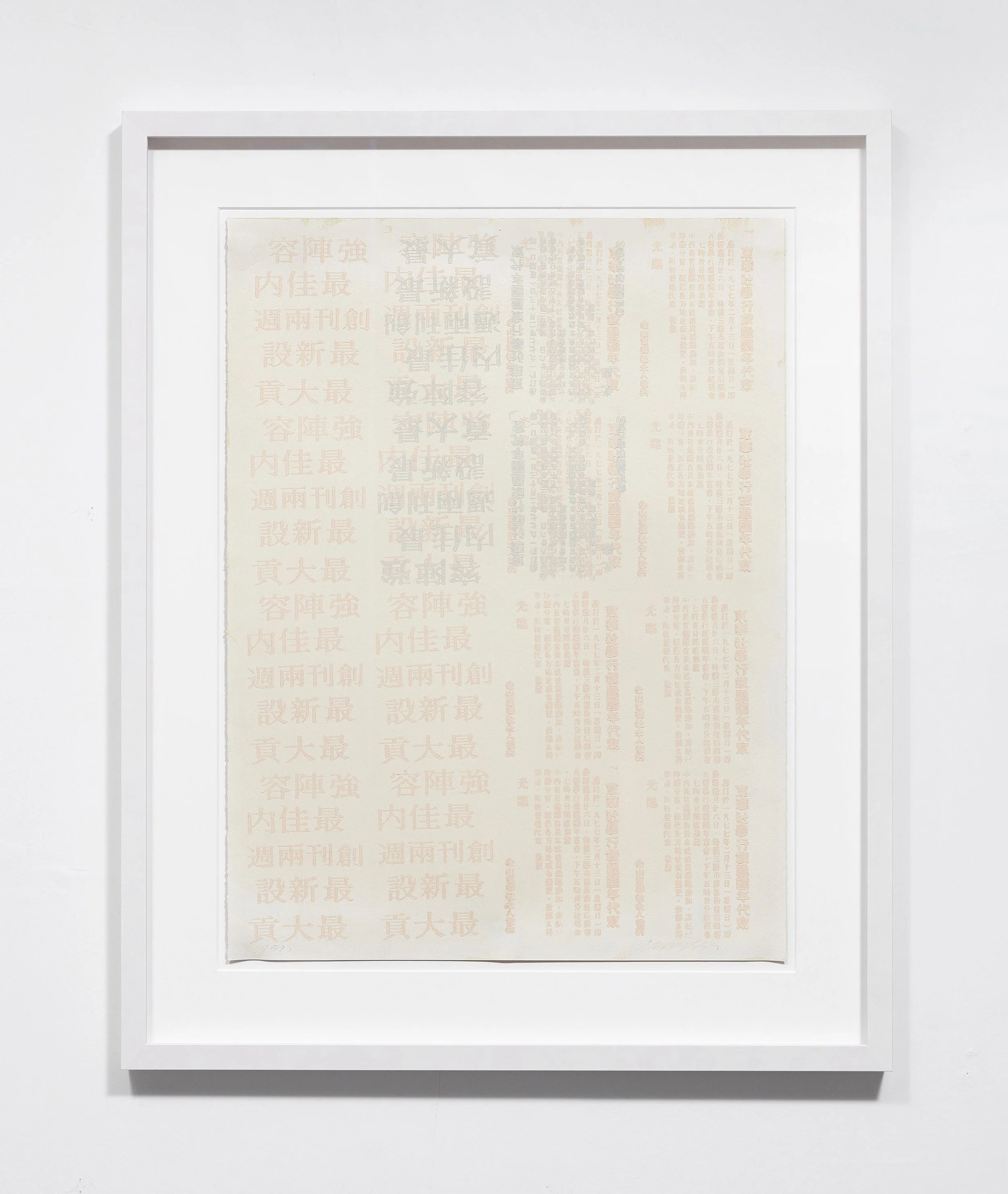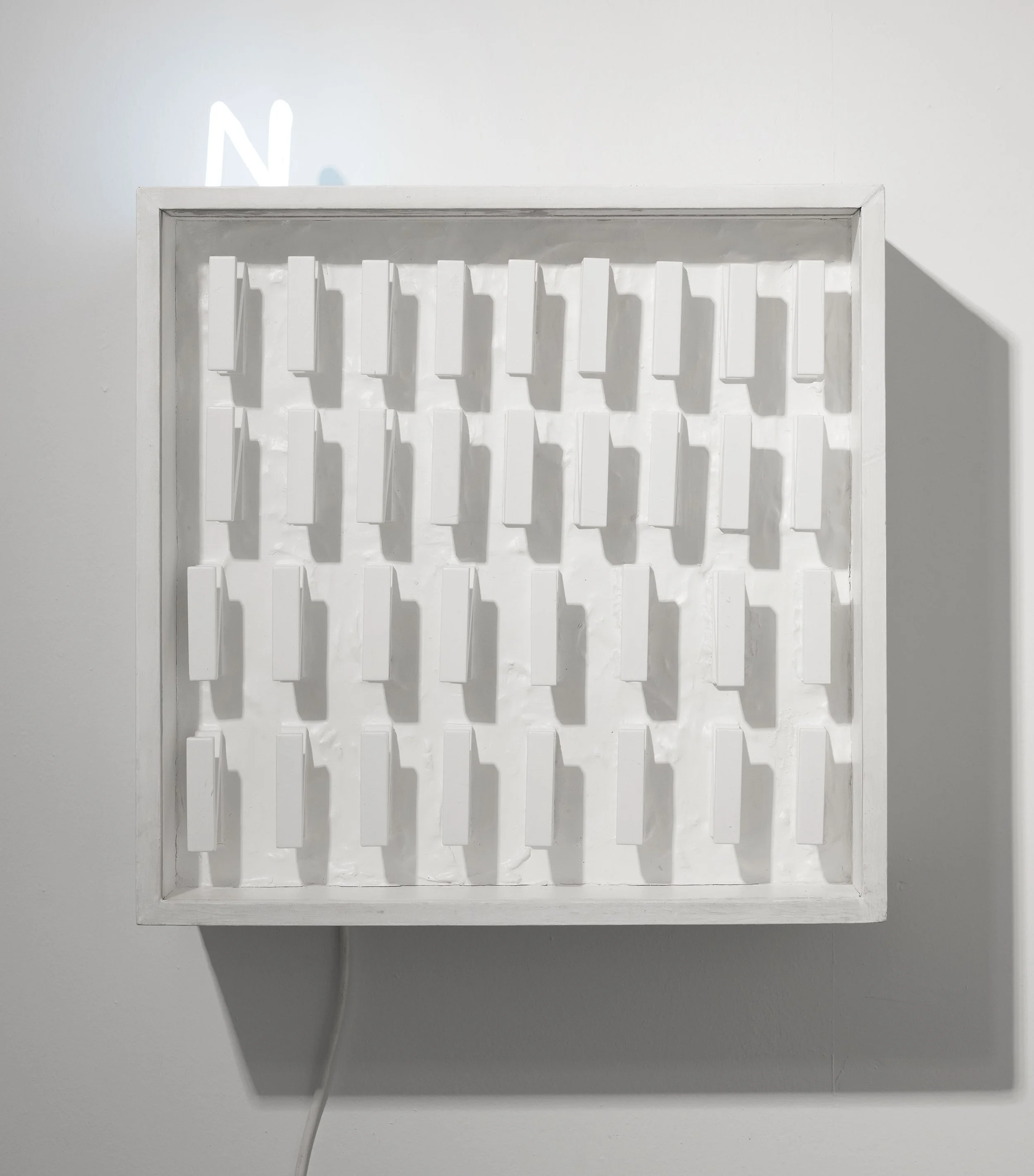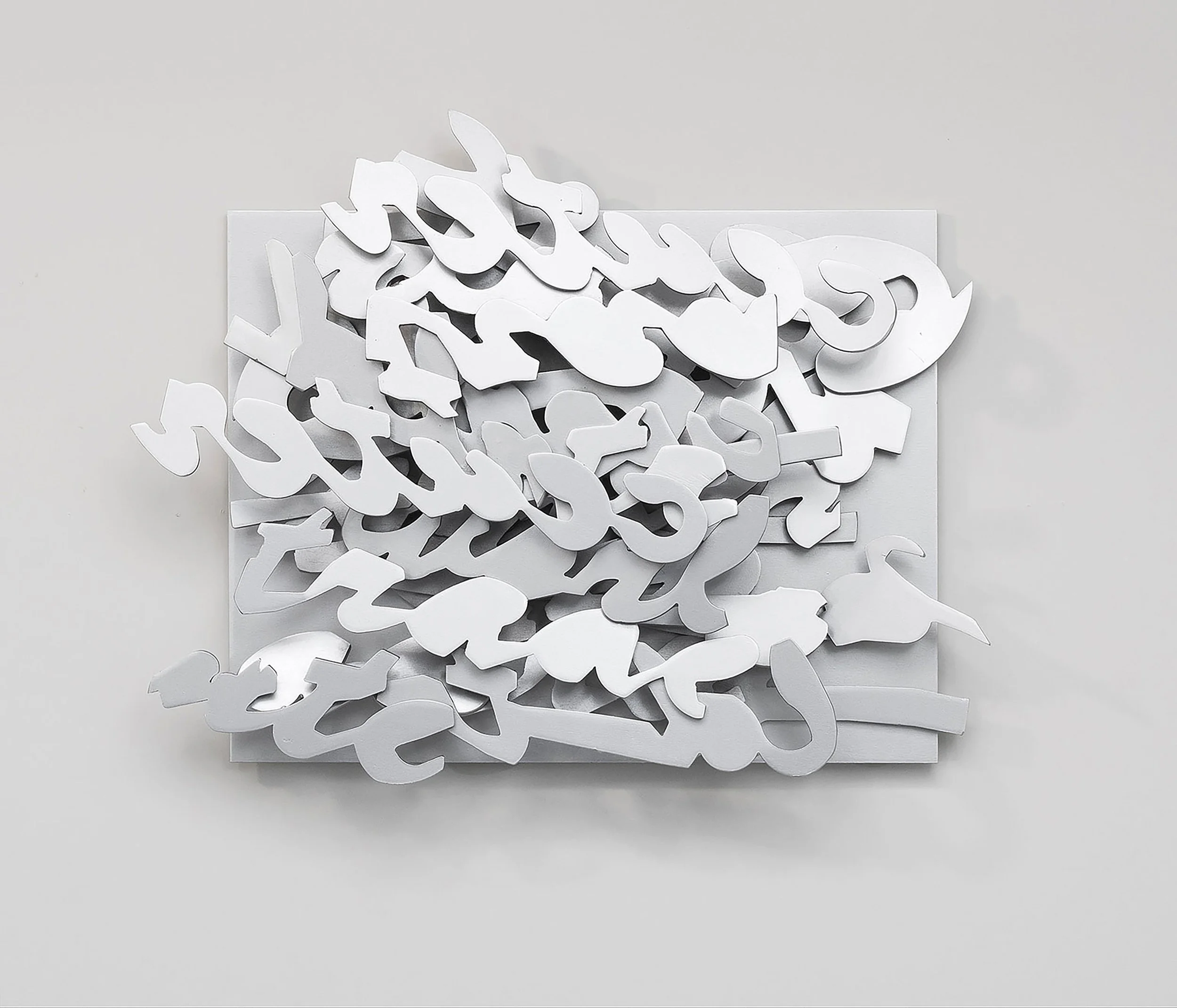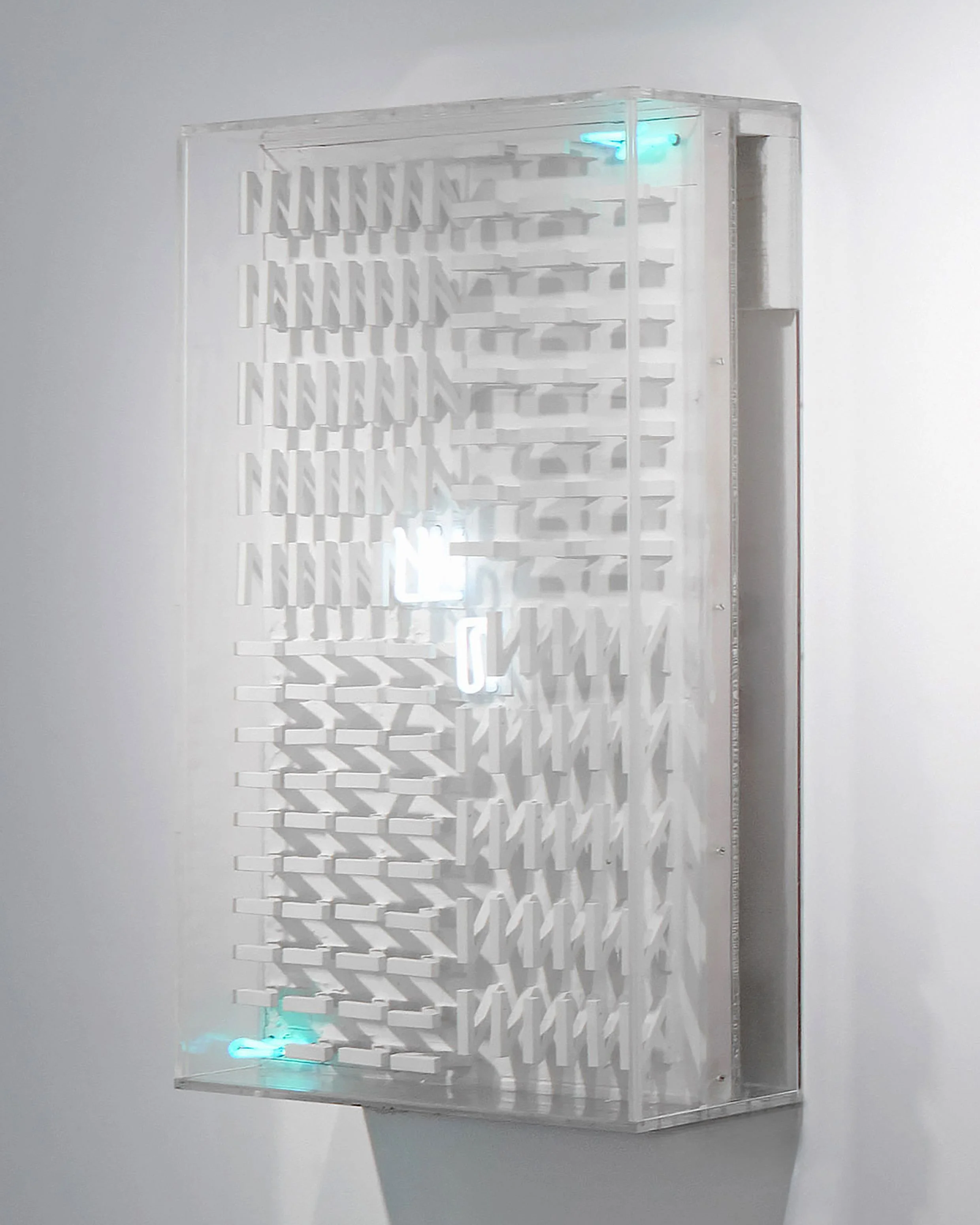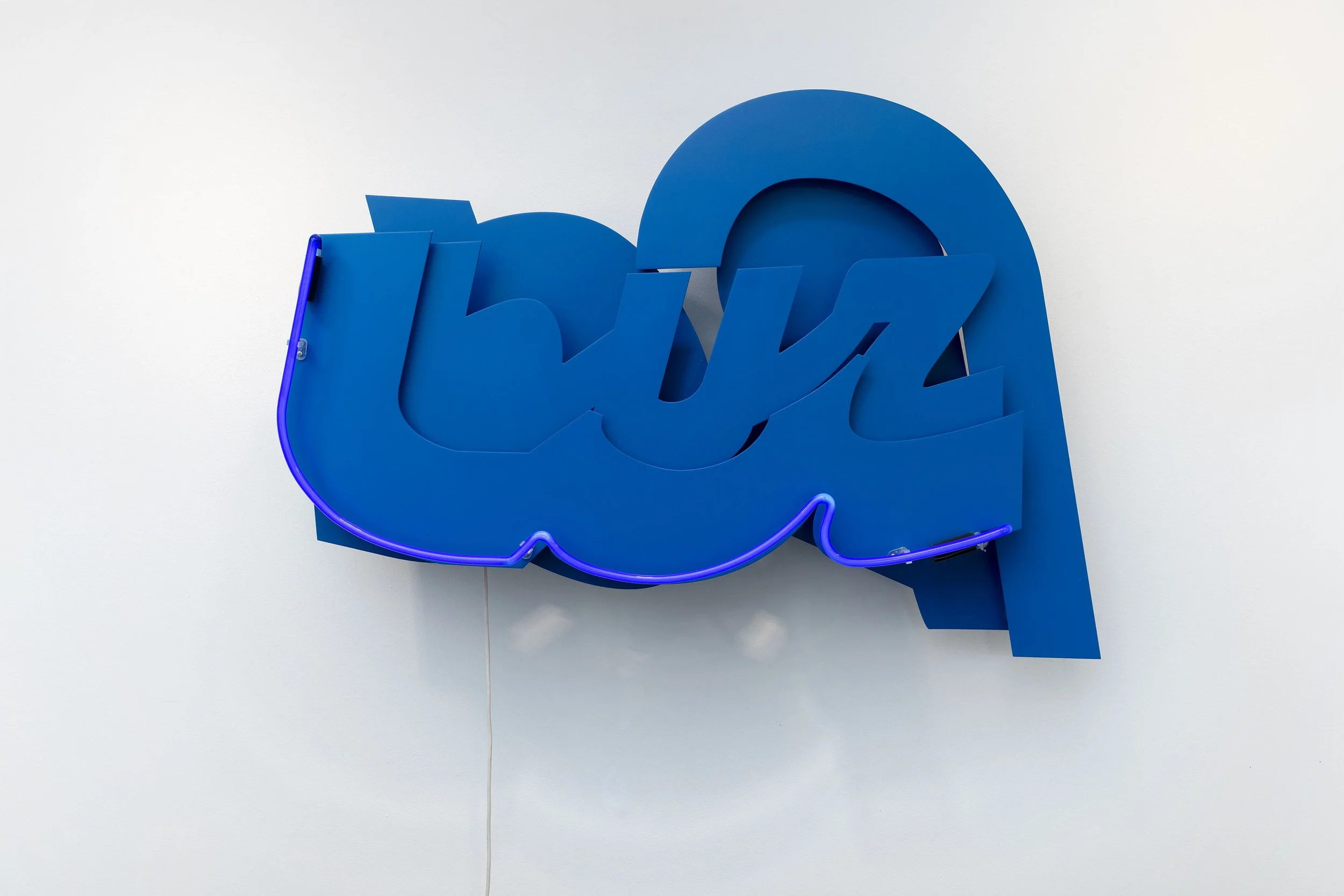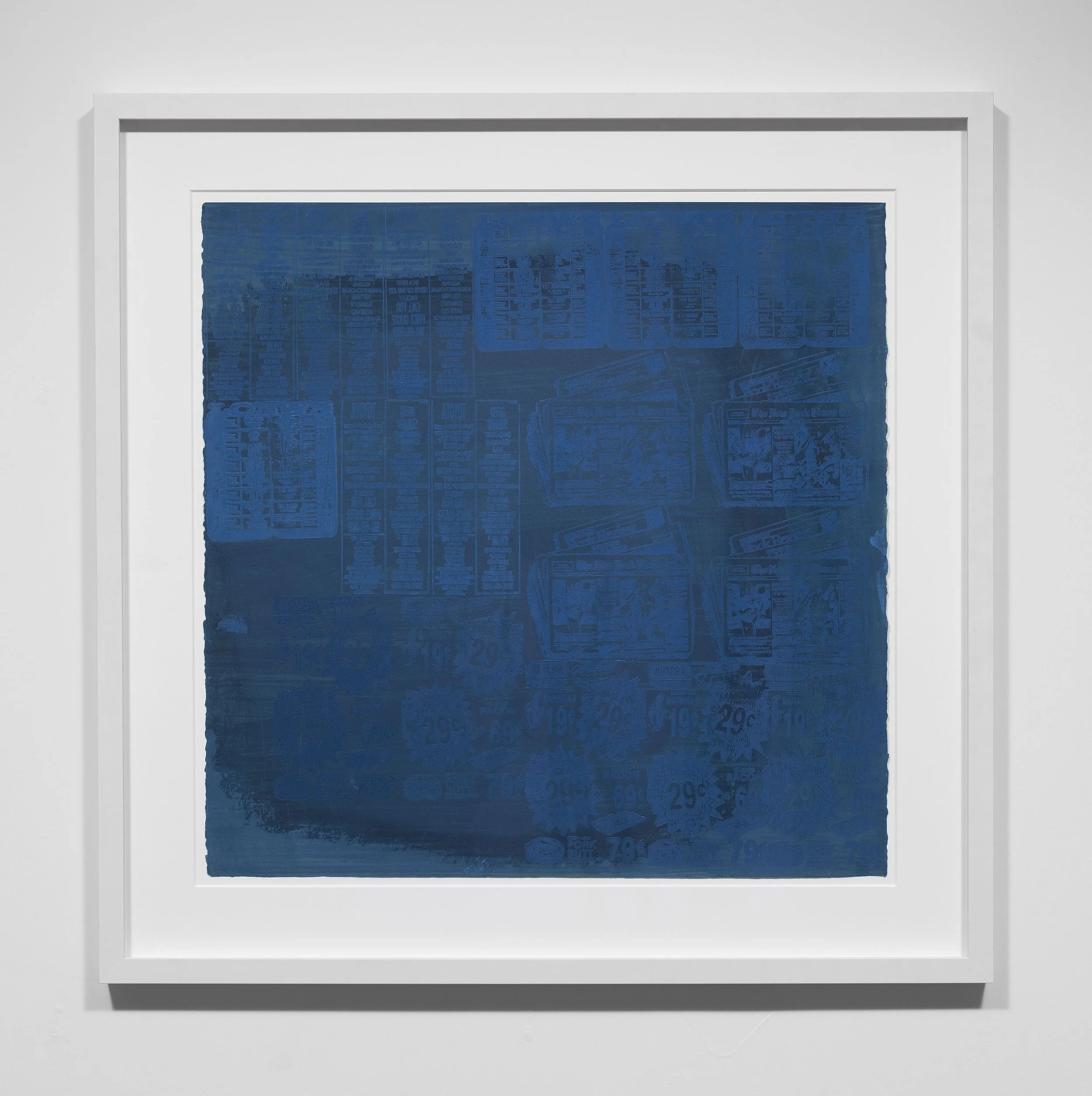Chryssa
Eccentric Abstraction
11 June — 3 September 2022
curated by Virginia Marano
Blue Velvet Projects is proud to present “Chryssa: Eccentric Abstraction”, the Greek-American artist’s first presentation in Switzerland, bringing together some of Chryssa’s revolutionary sculptures, paintings, and works on paper. Drawing its title from Lucy Lippard’s notorious show organized at the Fischbach Gallery in New York in 1966, the exhibition alludes to the eccentric abstraction that drove Chryssa to reflect on the infinite potential of art-making.
Chryssa experimented with a wide range of materials, such as neon, bronze, aluminum, plaster, and plastic. Her paintings and large-scale assemblages reveal the contemporary outlines of a new classicism, as in an eccentric encounter between tradition and modernity. In the mid-1950s, she used discarded commercial cardboard boxes as casts to produce white-plaster reliefs known as the Cycladic Books. They evoke an undecipherable ancient alphabet based on the mysterious marble Cycladic idols of the Aegean Islands. Here, the frenetic symptoms of Western consumerism are transformed into a lyrical and contemplative abstraction. She sculpted the ungraspable, a self-contradictory undertaking which was to become obsessive in the postwar years.
Deeply affected by the traumatic wounds of war and the Nazi occupation of Greece, Chryssa investigated the power of communication and revisited signs, symbols and letters as a way of escaping censorship. The fusion of old advertising signs and her serial development of Chinese characters, single letters of the alphabet and numbers, prefigured the aesthetic of Minimalism. Chryssa’s repeating passages from newspapers and stamped oils on canvas had also an impact on the just-inaugurated Andy Warhol’s pop genealogy. She assembled fragments of advertisements, weather maps, and stock-market charts, by tracing on them repetitive letters and lines strewn with symbolism. This pictorial strategy challenged the referential logic of representation and the question of content.
In post-war New York, she was a cherished friend of Agnes Martin, Louise Nevelson, and Betty Parsons with whom she created an intellectual network of resistance within the patriarchal enclosure of that time. Agnes Martin and Chryssa, who were in an on-off relationship during the 1960's, had their studios located on the Coenties Slip, a small strip of land in the old seaport of Manhattan overlooking the Brooklyn Bridge. They used to stroll there together, taking inspiration from the view of light reflecting off the water of the East River. At that time, when New York became a bustling art hub, Chryssa was experimenting with static and kinetic lights. In 1966, she completed “The Gates to Times Square,” today at the Albright-Knox Art Gallery, in Buffalo, New York. This large-scale installation in form of a gate is one of her most significant sculpture casts in stainless steel, plexiglass and neon tubing, that encourages a physical interaction bounding together the individual and the collective. At the entrance of the portal, the all-enveloping quality of light explodes into a shattering over-all experience of color, rhythm and forms. The visitors pass through the gate, as in a theatrical stage, opening up new perceptual pathways.
Using different media such as drawings, lights, optics, and found objects, Chryssa re-defined the viewer’s relationship with space and time. Her creations, leaned more toward symbolism, reflect on the inner self and the outer world, setting light as an under-explored possibility for sculpture. The fragmented and illuminated signs that contemplate the rhythm of New York City develop in her late practice towards connections that are about evoking and suggesting. As a woman artist Chryssa challenged the patriarchal culture of that time, by embracing the more complicated emotions that arise within the vocabulary of freedom.
— Virginia Marano
Krispy Kreme, ca. 2000 Metal paint with neon light 103 x 91 cm
Untitled (beige & light grey on cream Chinese classifieds stamps), 1973 Oil with stamp prints on paper 60 x 45 cm
White Plaster with neon N's, 1975 - 1976 Plaster and neon light 49 x 49 x 15 cm
Cityscapes, 2003 Aluminium painted 55 x 43 x 9 cm
Plaster N's I, 1970 Plaster and neon light 116,8 x 78,7 x 22,8 cm
Blue "Hamburger Heaven/Ice Cream Parlour" (BUR), ca. 2000 Aluminium painted, neon light 93 x 90 x 31 cm
Untitled (dark blue on deep blue advert stamps "Florida $89"), 1959 Oil with stamp prints on paper 55 x 56 cm
Jazz, 1967 Neon light, plexiglass 70 x 51 x 31 cm
